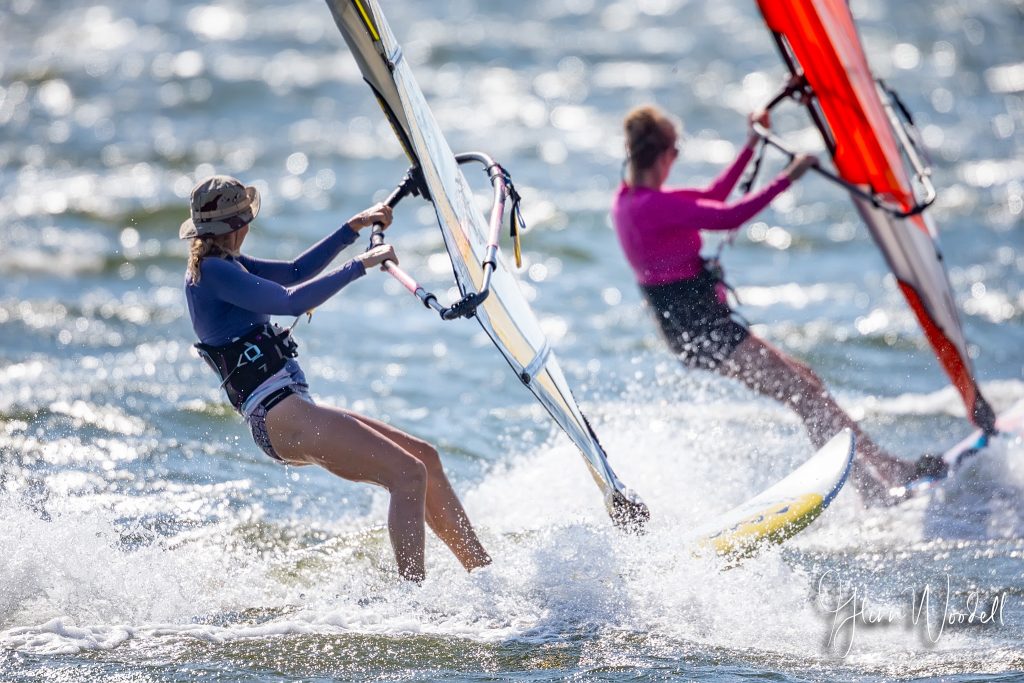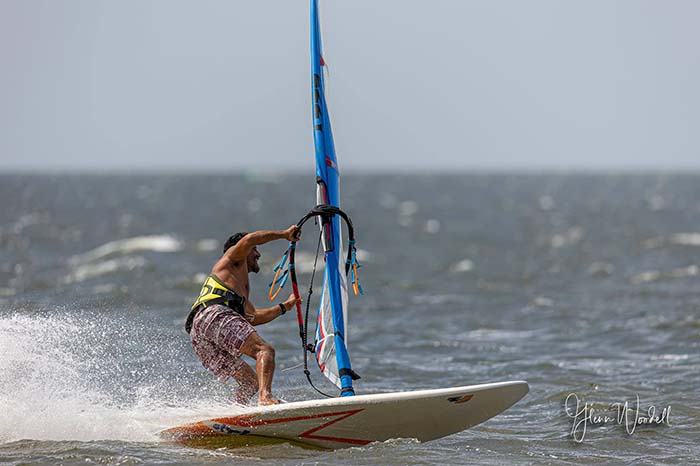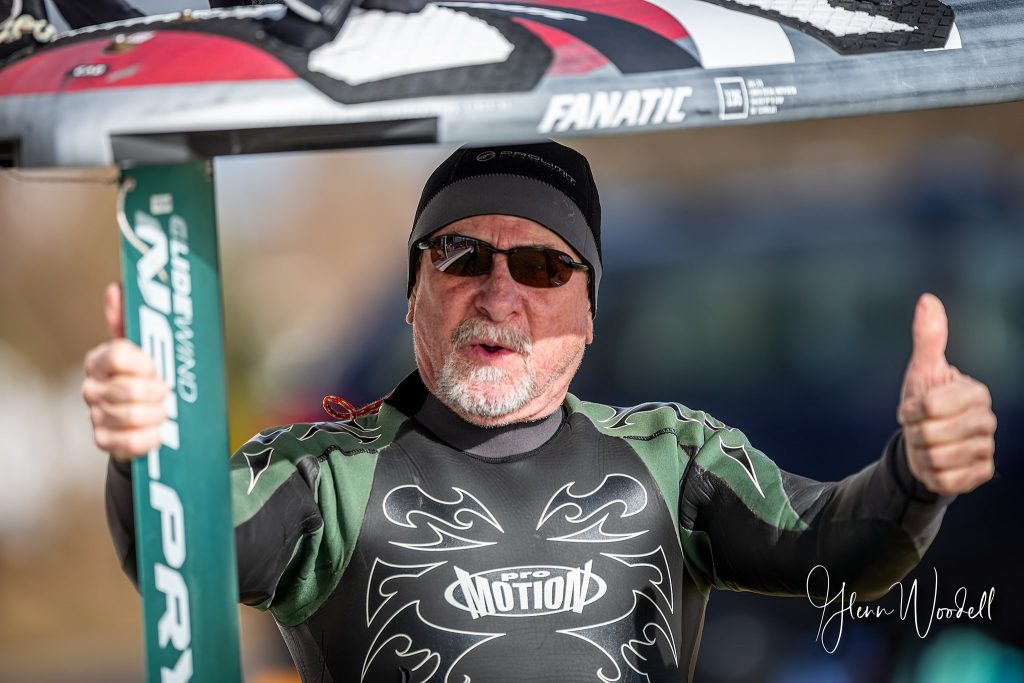Selecting Your Gear
 SailWET Buy/Sell Forum
SailWET Buy/Sell Forum
Discussion points by:
- Glenn Woodell
- Nick Datyner
The main reason we all windsurf is to have fun. Windsurfing is a sport of energy transfer and conservation. If you cannot transfer the energy of the wind in an efficient manner, you become tired quickly and the fun factor drops. If you can use less energy and better utilize what you have, you can sail faster and longer and progress so much more quickly, all the while keeping a big grin on your face.
Windsurfing has been around since the 1970s and has evolved tremendously over those years. Sails are much lighter and more stable (they hold their optimum shape better) and work well in a much wider range of winds than before. Masts and booms are lighter and stronger and smaller at the same time, making them easier to use and more comfortable for the sailor. And boards are smaller, wider, and so much lighter, removing much of the labor involved in getting to and from the beach. All of this means more efficiency in your sailing which means more fun in the end.
When faced with a newcomer to the sport, many of us are often challenged with keeping them away from old gear which will hamper their ability to progress quickly and possibly turn them completely off of the sport. There are lots of “deals” out there on used gear but the untrained sailor is tempted to get something that is less than appropriate. Consider the analogy of going snow skiing with wooden skis. Sure it can be done but even ten year old skis would be so much better.
There is absolutely nothing wrong with used gear. My favorite board was made in ‘95. The rotation of old gear is what helps to get the new gear out on the beaches. Just be careful when looking at older gear because it may not be suitable for you. If you do not know what you may be looking at, just ask someone who has been at it for a while. Since we have a very active windsurfing community here, most of the good used gear is to be had from one of the locals. And these same locals are more likely to sell their gear through word of mouth, through Sailwet.com, Windvisions.com, or the classifieds at iWindsurf.com. Sure, you will find gear on Craigslist and at yard sales but much of what is to be found there is really too old to be a worthwhile acquisition. Again, ask someone more experienced if you are unsure.

Boards
The hardest thing to find will be a suitable board because people like to hang on to boards that work well plus they are the most expensive part. If you are on the light side, say <150lb, you can probably get by with a 150-160L board (boards are usually quoted by volume but the shape-width/length are also important). If you are heavier, say >180lb, you will need boards >180L to start with. James’ blog (see below) discusses short wide boards vs long boards. The Mistral Prodigy is about 230L. You’ll find shorter, wider boards easier to learn on. For sails, start with a 5.5m if you are lighter and a 6.5m or thereabouts if you are heavier. For these sails you will probably need either a 430 or 460cm mast and an extension. You’ve probably seen skinny masts and these are more durable and easier to thread through the sail mast pocket but they are expensive. You will need a mast extension to match the mast length to the sail luff length. The sail will also specify the boom length so you will need a boom that will extend long enough for the sail. Typically, booms will cover a 2m range in sails so you might have a boom that will work with a 5m sail up to about 7m. The boom normally has the range written on the side. You will use these same sails, booms, and masts even when you are more experienced, but then that will be in stronger winds. If you upgrade you can sell the older stuff or keep it and loan it to the crowd at Weekend sailing.
Masts
A few notes about masts are worthwhile here. Fiberglass masts have pretty much been phased out and replaced with carbon masts (typically fiberglass and carbon or varying content) which are considerably lighter. Also, the old fiberglass masts (usually come in colors) will likely leave you itching from the fibers that they shed. Carbon masts will not do this.
High carbon content masts are so much lighter than fiberglass. Consider that weight twelve to fourteen feet high and you can see how much more energy it takes to maneuver it and why that makes a difference. We refer to that as swing weight and you want to keep that to a minimum as much as possible. High carbon, skinny masts are nice to have but not a necessity. They are no lighter than standard diameter masts but they are considerably stronger. What is very important however is that you get the right mast for your sail. Read more about this important topic in the discussion about rigging in the “Learn” section on www.sailwet.com or linked below.
Sails
On to sails. The newcomer is wise to avoid race sails. These do not make you go fast. In fact they will likely make you go slower and will definitely frustrate you by using up more of your energy and decreasing your fun factor. Sails (and especially boards) come in ever-evolving categories such as freeride, race, wave, crossover, freestyle, etc. There is not a big difference between most of the sails other than the race sails. Most will work just fine for recreational sailing. Just stay away from any sails that have cam inducers (called cams) and you will be fine. A sail that you learn on is likely to be suitable still when you progress since you will likely use it in stronger winds.
 Booms
Booms
Most booms are usually fine for the beginner. Just make sure that they have some sort of clamp on the front end for attachment to the mast. If they have a tie-on attachment then walk away as fast as you can. These are better served on old sails used as decorations in restaurants than in use on the water. Even a banged up boom will be satisfactory for learning and will give you a couple years of good use.
Old boards are especially troublesome for sending you down a road of constant repair and conversion if you can even find the parts. Fortunately, most board components became pretty standardized in the early 90s so only really old boards fall into this category but there are still plenty of them out there. Not only are the older boards considerably heavier but they don’t sail as easily. More wasted energy and less fun. Here’s where talking to someone with more experience will be very valuable.
One of the most valuable pieces of wisdom to remember is to find people who are already advanced in the sport and learn from them. If you want to race then hang with the racers. If you want to sail bump and jump conditions then head to the beaches when it’s really windy and meet the folks who chase the high winds on the open waters and learn from them. If you are happy sailing light winds and flat water then seek out those who sail on the calmer days. What you will find is that there are many who sail all the above.
Getting your own gear early is one of the best ways to progress quickly. But getting the wrong gear can set you back or completely turn you away from the sport. Getting appropriate gear is the key. Learn from others in the community and most importantly, get as much TOW (Time On the Water) as possible.
References:
1. James Douglass discussion of beginner rig questions
http://jimbodouglass.blogspot.com/2008/02/top-16-windsurfing-questions-answered.html
2. Glenn Woodell’s overview of proper rigging
